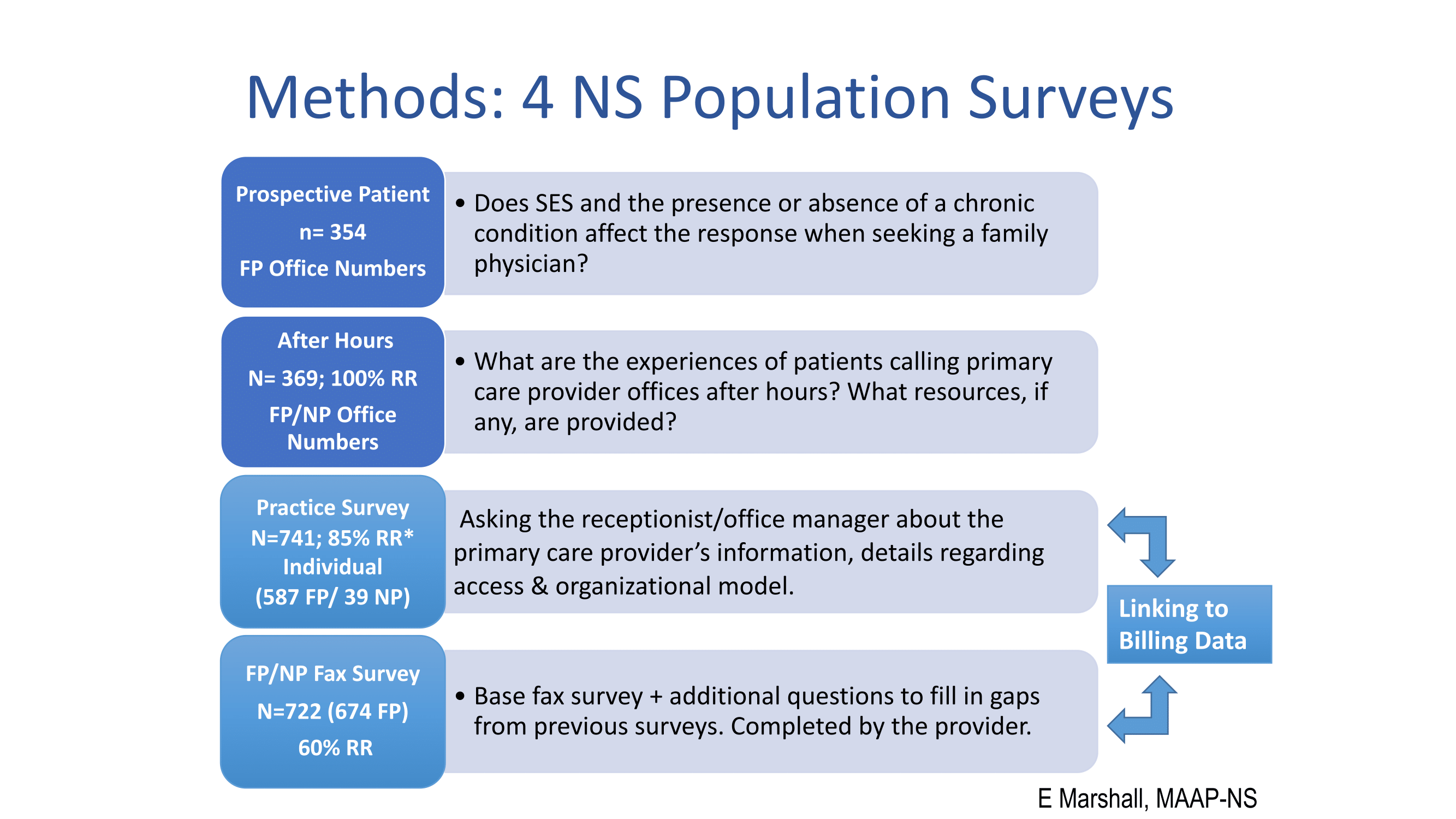Marshall, EG et al. The lived experience of unattached patients in Nova Scotia: A mixed methods study. Grant under review
The proposed study aims to explore the experiences of unattached patients in relation to their health, health care needs, and search for a regular PHC provider. This is intended to be the first initiative in a larger program of research that aims to explore more deeply the issue of unattached patients, including: 1) scale up to quantitatively characterize unattached patients in Nova Scotia 2) prospective follow up of unattached patients in Nova Scotia to examine their health system use; 3) possible scale up of data collection to include unattached patients in Atlantic Canada, in alignment with the growth of the MAAP-NS study; and 4) exploration of providers’ decision making processes regarding how they decide whether or not to bring new patients into their practice. This broader, future exploration, built from the initial study proposed here, will complement the MAAP-NS study, which is focused on describing the practice characteristics of PHCPs in NS, by demonstrating patient impact and identifying opportunities for intervention.


